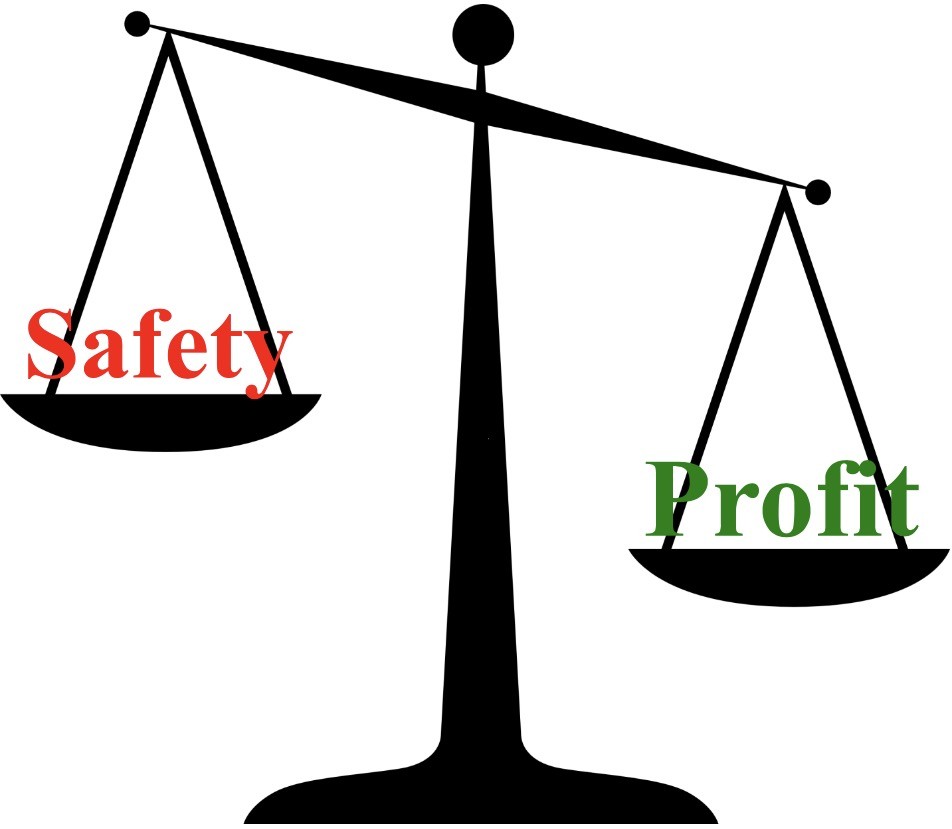Myth Busting the Safety vs. Profit Culture – How a Focus on Safety Can Lead to Naturally Increased Profits

In the early 1900s, Manufacturing in America was booming. The industrial revolution was in full swing and more and more jobs were moving from the farms and fields to factories in the cities. In those times working in a manufacturing facility was hard, dirty and often times deadly. The machinery was loud, clanky, and without safeguards to protect workers. Chemicals were used freely and without protection. Hours were long with workers (especially in the steel industry) working upwards of 12-14 hour days which led to many fatigue related injuries. The US simply did not have the laws in place to deal with this new and rapidly-growing industrial age. As a result many workers grew sick, were injured or even killed. Change was slow as wealthy businessmen and investors would use their influence to prevent new laws that in their eyes would decrease production.
The good news is, change did eventually come. New regulation forced plants to become more focused on the safety of their employees and with it came an unexpected result – innovation. Factories were kept cleaner, which led to less waste and better quality products. A safety focus in machine design led engineers to build ones that needed less human interaction to make them function and as a result made them more efficient. Ultimately these improvements that kept the safety of the employee in mind led to an increased quality of life for the worker and as a result created a booming middle class and growth in US manufacturing.
But the concepts of profit versus safety often can run at odds with each other. But changing your culture to one of safety can bring benefits that naturally increase profits.
Creating a culture of organization
The first thing that a focus on safety does is create a culture of organization. In order to be safe, you have to be organized. From keeping safety checklists up to date, to keeping your PPE (personal protective equipment) well maintained and inventoried or even running regular inspections. Having a safety plan requires your employees to keep their areas organized. This naturally will lead to keeping other non-safety related areas better maintained as well.
Improved Communication skills
Safety requires planning and planning requires communication. One of the most important facets to having a good safety program is regular training. The stronger the program, the more managers and supervisors will get to interact with employees and hold regular safety meetings. This will give managers a chance to hone their training skills and reinforce natural leadership. It will also create trust in the employee that their company has their best interests at heart and thus improve morale.
Improving efficiency
Safety improvements throughout a facility can lead to some amazing results when it comes to improving efficiency. Take for example a safety violation such as leaving a tangled mess power cords across a hallway as a trip hazard. This not only creates a trip hazard, but also slows employee movement across the area. Removing the obstruction in this case has a doubled effect. It not only makes the environment safer but improves employee efficiency as they move through. As another example, keeping all of your flammable chemicals in a fire cabinet allows the inventory control clerk to only have to inventory one place, rather than have to spend their time looking all over the facility to keep track.
At times safety may seem to be a pain. There are many rules to follow, checklists to maintain and equipment to buy. But putting a good safety plan in place has many benefits. Benefits that not only keep your most precious investment safe (your employees) but will naturally increase profits.
Please share your comments or questions with us below and be sure to visit gesrepair.com or call us at 1-877-249-1701 to learn more about our repair services. We’re proud to offer Complete Repair and Maintenance on all types of Industrial Electronics, Servo Motors, AC and DC Motors, Hydraulics and Pneumatics. Please subscribe to our YouTube page, Like Us on Facebook! Thank you!
